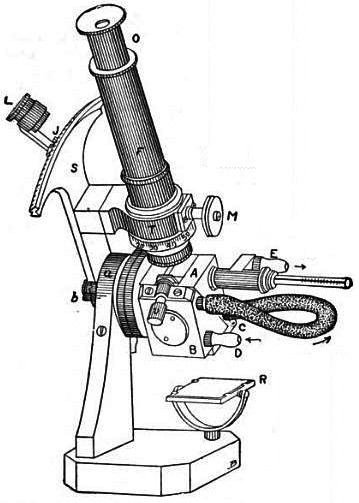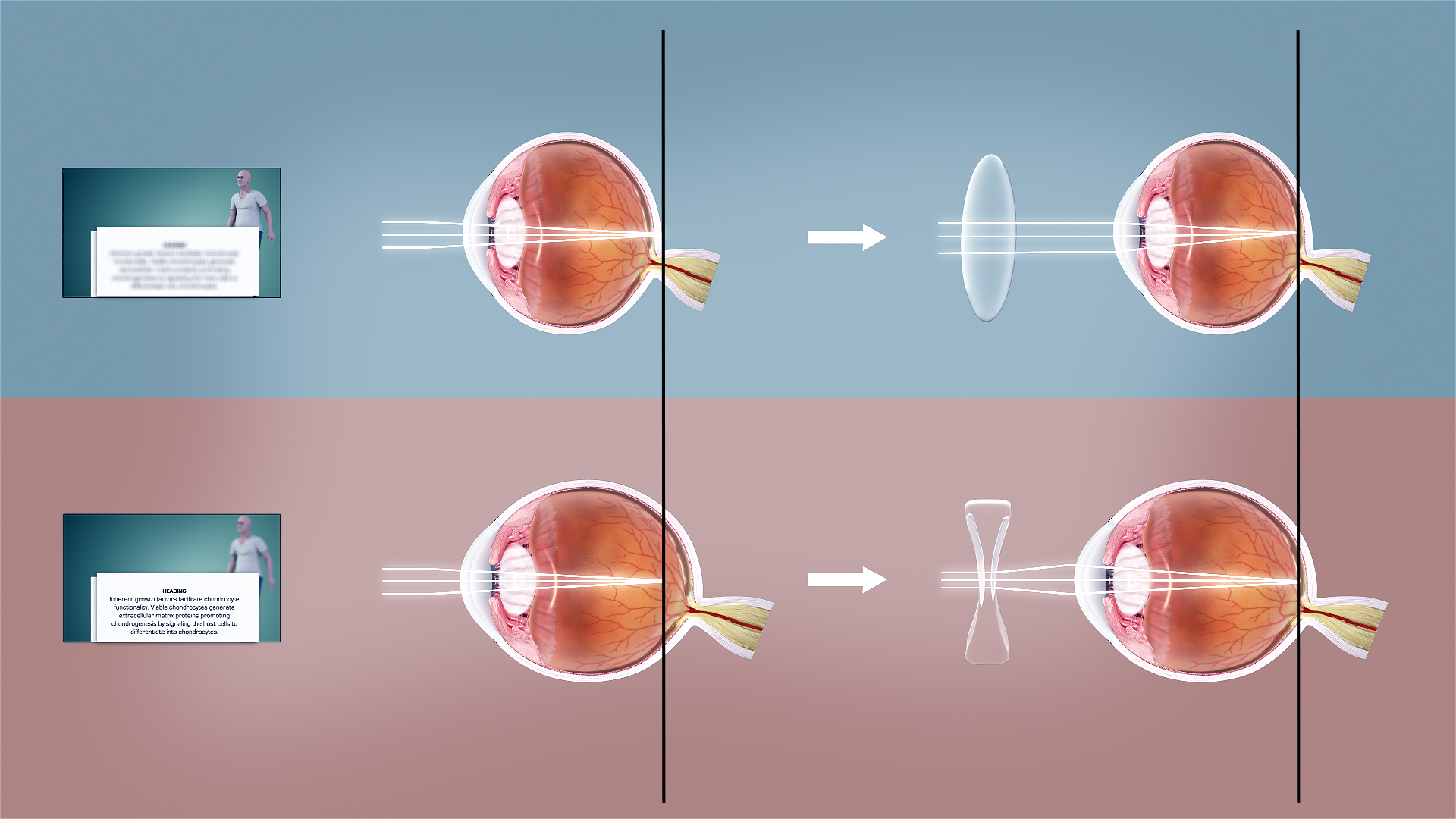|
Lensmeter
A lensmeter or lensometer (sometimes even known as focimeter or vertometer), is an ophthalmic instrument. It is mainly used by optometrists and opticians to measure the back or front vertex power of a spectacle lens and verify the correct prescription in a pair of eyeglasses, to properly orient and mark uncut lenses, and to confirm the correct mounting of lenses in spectacle frames. Lensmeters can also verify the power of contact lenses, if a special lens support is used. The parameters appraised by a lensmeter are the values specified by an ophthalmologist or optometrist on the patient's prescription: sphere, cylinder, axis, add, and in some cases, prism. The lensmeter is also used to check the accuracy of progressive lenses, and is often capable of marking the lens center and various other measurements critical to proper performance of the lens. It may also be used prior to an eye examination to obtain the last prescription the patient was given, in order to expedite the sub ... [...More Info...] [...Related Items...] OR: [Wikipedia] [Google] [Baidu] |
Glasses
Glasses, also known as eyeglasses or spectacles, are vision eyewear, with lenses (clear or tinted) mounted in a frame that holds them in front of a person's eyes, typically utilizing a bridge over the nose and hinged arms (known as temples or temple pieces) that rest over the ears. Glasses are typically used for vision correction, such as with reading glasses and glasses used for nearsightedness; however, without the specialized lenses, they are sometimes used for cosmetic purposes. Safety glasses provide eye protection against flying debris for construction workers or lab technicians; these glasses may have protection for the sides of the eyes as well as in the lenses. Some types of safety glasses are used to protect against visible and near-visible light or radiation. Glasses are worn for eye protection in some sports, such as squash. Glasses wearers may use a strap to prevent the glasses from falling off. Wearers of glasses that are used only part of the time may have ... [...More Info...] [...Related Items...] OR: [Wikipedia] [Google] [Baidu] |
Ophthalmic Equipment
Ophthalmic means pertaining to the eye, and can refer to: * Ophthalmology * Ophthalmic nerve * Ophthalmic artery The ophthalmic artery (OA) is an artery of the head. It is the first branch of the internal carotid artery distal to the cavernous sinus. Branches of the ophthalmic artery supply all the structures in the orbit around the eye, as well as some st ... * Ophthalmic veins * Ophthalmic drug administration, as with eye drops See also * Ophthalmia {{disambig ... [...More Info...] [...Related Items...] OR: [Wikipedia] [Google] [Baidu] |
Abbe Refractometer
An Abbe refractometer is a bench-top device for the high-precision measurement of an index of refraction. Details Ernst Abbe (1840–1905), working for Carl Zeiss AG in Jena, Germany in the late 19th century, was the first to develop a laboratory refractometer. These first instruments had built-in thermometers and required circulating water to control instrument and fluid temperatures. They also had adjustments for eliminating the effects of dispersion and analog scales from which the readings were taken. In the Abbe refractometer the liquid sample is sandwiched into a thin layer between an illuminating prism and a refracting prism. The refracting prism is made of a glass with a high refractive index (e.g., 1.75) and the refractometer is designed to be used with samples having a refractive index smaller than that of the refracting prism. A light source is projected through the illuminating prism, the bottom surface of which is ground (i.e., roughened like a ground-glass ... [...More Info...] [...Related Items...] OR: [Wikipedia] [Google] [Baidu] |
Corrective Lens
A corrective lens is a lens (i.e. a transmissive optical device) that is typically worn in front of the eye to improve daily vision. The most common use is to treat refractive errors: myopia, hypermetropia, astigmatism, and presbyopia. Glasses or "spectacles" are worn on the face a short distance in front of the eye. Contact lenses are worn directly on the surface of the eye. Intraocular lenses are surgically implanted most commonly after cataract removal but can be used for purely refractive purposes. Prescription of corrective lenses Corrective lenses are typically prescribed by an ophthalmologist or an optometrist. The prescription consists of all the specifications necessary to make the lens. Prescriptions typically include the power specifications of each lens (for each eye). Strengths are generally prescribed in quarter- diopter steps (0.25 D) because most people cannot generally distinguish between smaller increments (e.g., eighth-diopter steps / 0.125 D). ... [...More Info...] [...Related Items...] OR: [Wikipedia] [Google] [Baidu] |
Prism Dioptre
Eye care professionals use prism correction as a component of some eyeglass prescriptions. A lens which includes some amount of prism correction will displace the viewed image horizontally, vertically, or a combination of both directions. The most common application for this is the treatment of strabismus. By moving the image in front of the deviated eye, double vision can be avoided and comfortable binocular vision can be achieved. Other applications include yoked prism where the image is shifted an equal amount in each eye. This is useful when someone has a visual field defect on the same side of each eye. Individuals with nystagmus, Duane's retraction syndrome, 4th Nerve Palsy, and other eye movement disorders experience an improvement in their symptoms when they turn or tilt their head. Yoked prism can move the image away from primary gaze without the need for a constant head tilt or turn. Prism correction is measured in prism dioptres. A prescription that specifies ... [...More Info...] [...Related Items...] OR: [Wikipedia] [Google] [Baidu] |
Focometer
A focometer is an instrument that measures refractive errors and is intended to provide rural or economically disadvantaged populations spherical eyeglass prescriptions without the need for complicated protocols, expensive equipment, or electricity. The focometer is monocular and hand-held, and is normally used in natural lighting. Patients rotate a collar on the focometer until the best focus is achieved. The individual's refractive power is then read off a linear dioptre scale. The focometer was developed by Drs. Ian Berger and Larry Spitzberg at the University of Houston College of Optometry in Houston, Texas, to provide a simple, inexpensive means for measuring refractive error in human vision. The portable, hand-held instrument is highly appropriate for use in remote and poor areas. Focometers measure spherical refractive errors. Astigmatism can also be measured using a "clock target" with the device. A study has found, however, that the focometer is less effective for ide ... [...More Info...] [...Related Items...] OR: [Wikipedia] [Google] [Baidu] |
Diopter
A dioptre (British spelling) or diopter (American spelling) is a unit of measurement with dimension of reciprocal length, equivalent to one reciprocal metre, 1 dioptre = 1 m−1. It is normally used to express the optical power of a lens or curved mirror, which is a physical quantity equal to the reciprocal of the focal length, expressed in metres. For example, a 3-dioptre lens brings parallel rays of light to focus at metre. A flat window has an optical power of zero dioptres, as it does not cause light to converge or diverge. Dioptres are also sometimes used for other reciprocals of distance, particularly radii of curvature and the vergence of optical beams. The main benefit of using optical power rather than focal length is that the thin lens formula has the object distance, image distance, and focal length all as reciprocals. Additionally, when relatively thin lenses are placed close together their powers approximately add. Thus, a thin 2.0-dioptre lens placed close to a t ... [...More Info...] [...Related Items...] OR: [Wikipedia] [Google] [Baidu] |
Optical Power
In optics, optical power (also referred to as dioptric power, refractive power, focusing power, or convergence power) is the degree to which a lens, mirror, or other optical system converges or diverges light. It is equal to the reciprocal of the focal length of the device: . High optical power corresponds to short focal length. The SI unit for optical power is the inverse metre (m−1), which is commonly called the dioptre. Converging lenses have positive optical power, while diverging lenses have negative power. When a lens is immersed in a refractive medium, its optical power and focal length change. For two or more thin lenses close together, the optical power of the combined lenses is approximately equal to the sum of the optical powers of each lens: . Similarly, the optical power of a single lens is roughly equal to the sum of the powers of each surface. These approximations are commonly used in optometry. An eye that has too much or too little refractive power to fo ... [...More Info...] [...Related Items...] OR: [Wikipedia] [Google] [Baidu] |
Lens Clock
A lens clock is a mechanical dial indicator that is used to measure the dioptric power of a lens. It is a specialized version of a spherometer. A lens clock measures the curvature of a surface, but gives the result as an optical power in diopters, assuming the lens is made of a material with a particular refractive index. How it works The lens clock has three pointed probes that make contact with the surface of the lens. The outer two probes are fixed while the center one moves, retracting as the instrument is pressed down on the lens's surface. As the probe retracts, the hand on the face of the dial turns by an amount proportional to the distance. The optical power \phi of the surface is given by :\phi = , where n is the index of refraction of the glass, s is the vertical distance ('' sagitta'') between the center and outer probes, and D is the horizontal separation of the outer probes. To calculate \phi in diopters, both s and D must be specified in meters. A typical ... [...More Info...] [...Related Items...] OR: [Wikipedia] [Google] [Baidu] |
Refractive Error
Refractive error, also known as refraction error, is a problem with focusing light accurately on the retina due to the shape of the eye and or cornea. The most common types of refractive error are near-sightedness, far-sightedness, astigmatism, and presbyopia. Near-sightedness results in far away objects being blurry, far-sightedness and presbyopia result in close objects being blurry, and astigmatism causes objects to appear stretched out or blurry. Other symptoms may include double vision, headaches, and eye strain. Near-sightedness is due to the length of the eyeball being too long, far-sightedness the eyeball too short, astigmatism the cornea being the wrong shape, and presbyopia aging of the lens of the eye such that it cannot change shape sufficiently. Some refractive errors occur more often among those whose parents are affected. Diagnosis is by eye examination. Refractive errors are corrected with eyeglasses, contact lenses, or surgery. Eyeglasses are the e ... [...More Info...] [...Related Items...] OR: [Wikipedia] [Google] [Baidu] |





